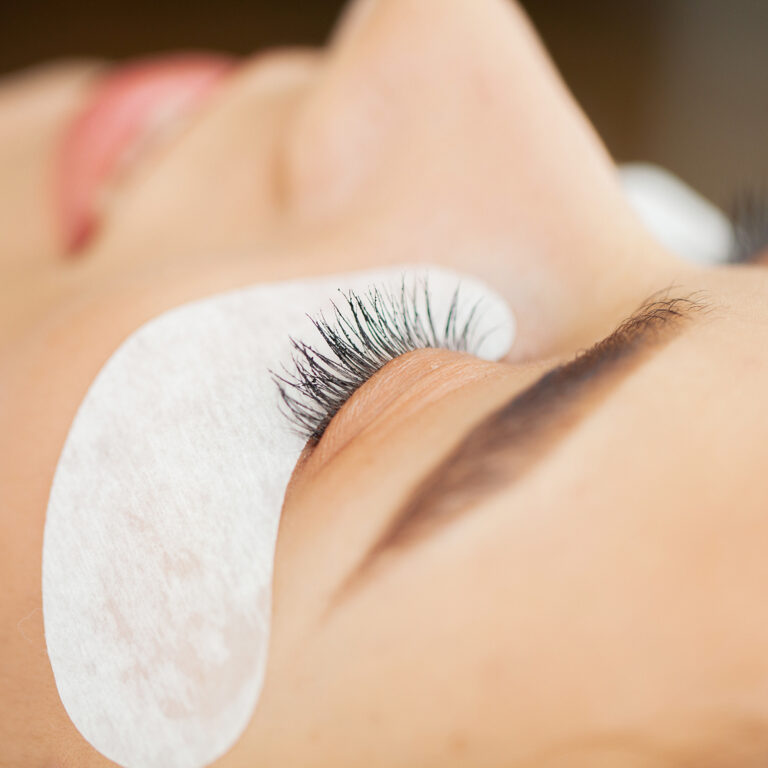If you’ve ever looked in the mirror and thought, “Why are my lashes suddenly falling out?” - you’re not alone. Welcome to what we in the lash world call lash shedding season. At Edy London, we see a surge in clients asking this very question as the seasons change, especially during spring and autumn. It’s …
If you’ve ever looked in the mirror and thought, “Why are my lashes suddenly falling out?” – you’re not alone. Welcome to what we in the lash world call lash shedding season. At Edy London, we see a surge in clients asking this very question as the seasons change, especially during spring and autumn. It’s completely natural, but it can catch you off guard if you’re not expecting it, particularly if you’ve got eyelash extensions.
Let’s break down the truth and fiction behind lash shedding season, what it means for your lash extensions, and most importantly, what you can do to minimise the impact on your natural lashes and lash sets.
What is Lash Shedding Season?
Lash shedding season refers to the time of year, typically spring and autumn, when you naturally lose more lashes than usual. This isn’t a sign of anything going wrong. It’s a natural part of your body adjusting to environmental changes, like temperature, humidity, and even how much daylight we’re getting.
Just like animals shed fur to grow a thicker or lighter coat for the change in season, we also go through cycles with our hair, including our lashes. So yes, seasonal lash fallout is real. It’s part of your body’s basic biology and completely normal.
You might notice more lashes on your pillow, your makeup wipe, or even on your clean lash wand. It doesn’t mean your extensions were applied incorrectly or that your natural eyelashes are unhealthy. It just means your body is doing what it’s meant to do.
Normally, we shed 5 lashes every day, that’s 35 lashes a week! But this is still considered a normal and healthy amount of lash shedding.
The Stages of Lash Shedding
Your natural eyelashes follow a set pattern called the natural lash growth cycle, which includes three key stages: the anagen, catagen, and telogen stages. Understanding these helps explain why your natural lashes fall and how long it takes before new ones grow in.
Anagen Phase – The Initial Growth Phase
This is when your lash hair is actively growing. Each natural lash is connected to its hair follicle and receives nutrients to grow stronger and longer. This initial growth phase lasts around 30 to 45 days. Not all your eyelashes are in this phase at the same time, each one follows its own individual hair cycle, which is why you don’t lose all your lashes at once.
Catagen Phase – The Resting Phase
In the catagen phase, your lashes stop growing and the follicle begins to shrink. This is a resting stage, and it usually lasts 2 to 3 weeks. If your eyelashes fall out during this time, they won’t grow back until the full cycle restarts with the anagen stage. That’s why it’s important to avoid disturbing your lash line, pulling or rubbing your lashes now could mean shedding prematurely.
Telogen Phase – The Shedding Phase
The telogen phase is the final part of the lash shedding cycle, and it’s where the lash naturally falls out to make way for a new one. This phase can last more than 100 days. During lash shedding season, more lashes than usual reach this telogen lash phase together, which is why it can feel like a sudden wave of your eyelashes falling. But remember, it’s a completely natural part of the life cycle of your eyelashes.
Growing Them Back: The Lash Growth Cycle
After a lash falls out, it’s not gone forever. The hair follicle rests for a short period, and then a new lash begins to grow in its place. This again starts the anagen phase, and the lash grows steadily over the next few weeks.
On average, it can take around 6 to 8 weeks for a full new lash to grow in. This is all part of the cycle, and it varies slightly for each person depending on factors like age, hormones, and overall health.
If your lashes are falling more than usual, rest assured they will grow back. The key is to promote lash growth with proper lash care and by avoiding anything that might cause lashes to shed prematurely.
What Does Lash Shedding Season Mean for Your Lash Extensions?
If you wear lash extensions, seasonal lash shedding can be frustrating. Extensions are attached to your natural lashes, so when your natural lashes fall out, the extensions go with them. You might feel like your lash set is thinning faster than usual, and guess what? You’re right.
But again, this isn’t a sign of poor application or bad products. It’s biology. The good news is that a skilled lash artist (like Edy!) can help you work around the shedding cycle and keep your lashes looking full and natural.
We recommend more frequent infill appointments during lash shedding season. This keeps your set looking fresh and avoids those gaps that sometimes appear when a cluster of lashes hits the telogen phase at once. A spoolie brush (like a mascara brush) can also help you gently separate and check for loose lashes daily, without pulling or causing further lash loss.
How to Minimise Damage During Shedding Season
You can’t stop lash shedding completely, and you shouldn’t try to. It’s a natural process. But there are a few smart ways to keep your lashes healthy and reduce unnecessary fallout:
Avoid oil-based skincare and makeup removers around your eyes.
Oils can weaken the bond of your lash extensions and cause them to slide off prematurely. They can also make your skin oilier, which doesn’t help during the shedding season.
Never tug or rub your eyes.
This can disturb the lash line and pull out lashes before they’re ready to fall.
Avoid using eyelash curlers.
They can weaken or snap your natural lashes, especially if they’re already in the resting phase.
Use a lash-safe cleanser daily.
Keeping your lashes clean removes debris and excess oil, which can contribute to lash loss.
Eat a balanced diet.
Hair growth, including lashes, relies on proper nutrition. Think protein, biotin, and iron.
Brush your lashes gently each day with a spoolie brush to keep them neat and tidy and to spot any lashes that are ready to fall out on their own. Remember: eyelash extension aftercare and general lash care is incredibly important!
In Conclusion: Don’t Panic, It’s Normal
Lash shedding season is a completely natural occurrence that happens to everyone, even those who don’t wear lash extensions. It’s simply part of the natural lash shedding cycle. Yes, it can be annoying when your lashes fall out faster than usual, but it’s all part of the cycle that helps your natural lashes stay healthy in the long term.
If you wear extensions, just remember that this time of year might require a bit more care and attention. Choose a lash tech (like Edy!) who understands the lash growth cycle and can adjust your infill appointments and lash mapping accordingly.
Why Book Your Lash Extensions with Edy London?

At Edy London, we don’t just apply lashes, we care for your natural lash health. Edy specialises in creating soft, natural looks that enhance your beauty without overpowering your face. Her celebrity clients and features in leading beauty magazines speak for themselves, but what really sets her apart is her attention to detail and commitment to your long-term lash health.
Whether you’re experiencing seasonal shedding or just want a beautiful new lash set, Edy will assess your natural lashes, talk you through what’s best for your growth cycle, and create a tailored plan that works for your eyes and your lifestyle.
In a world of one-size-fits-all volume lashes and rushed applications, Edy takes her time to ensure your lashes not only look amazing, but stay healthy and full in the long run.
So if you’re ready for natural-looking lashes that last, even through lash shedding season, book with Edy London today. Your future lashes will thank you.






